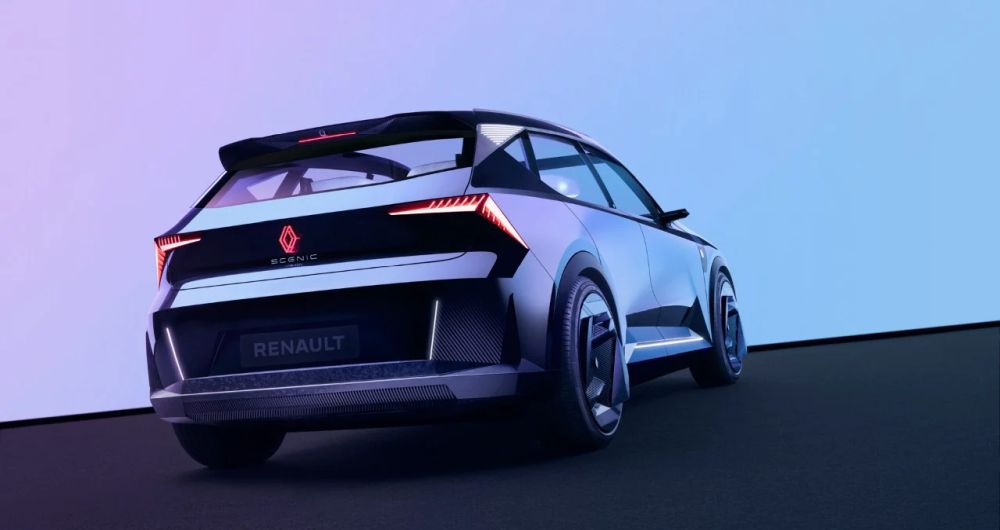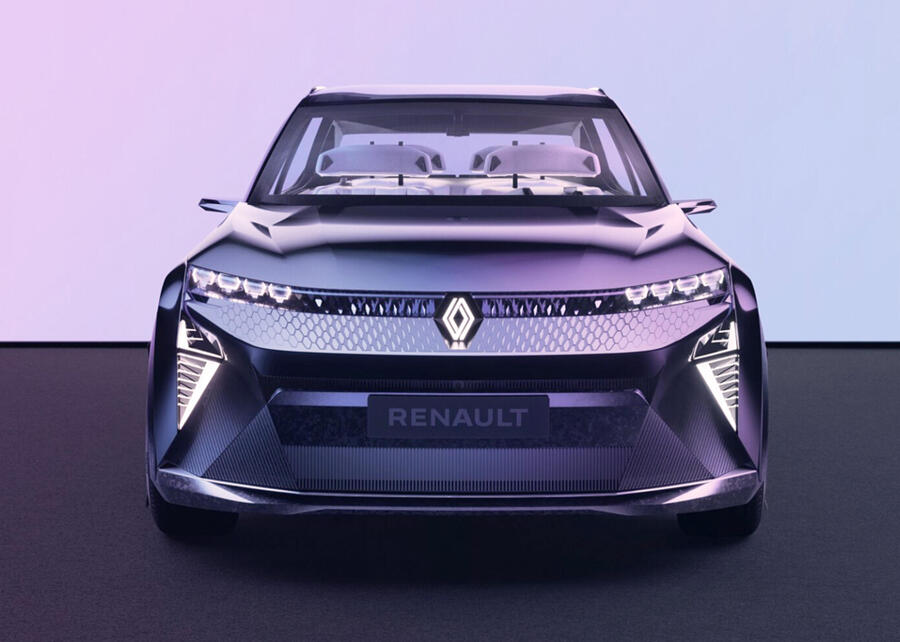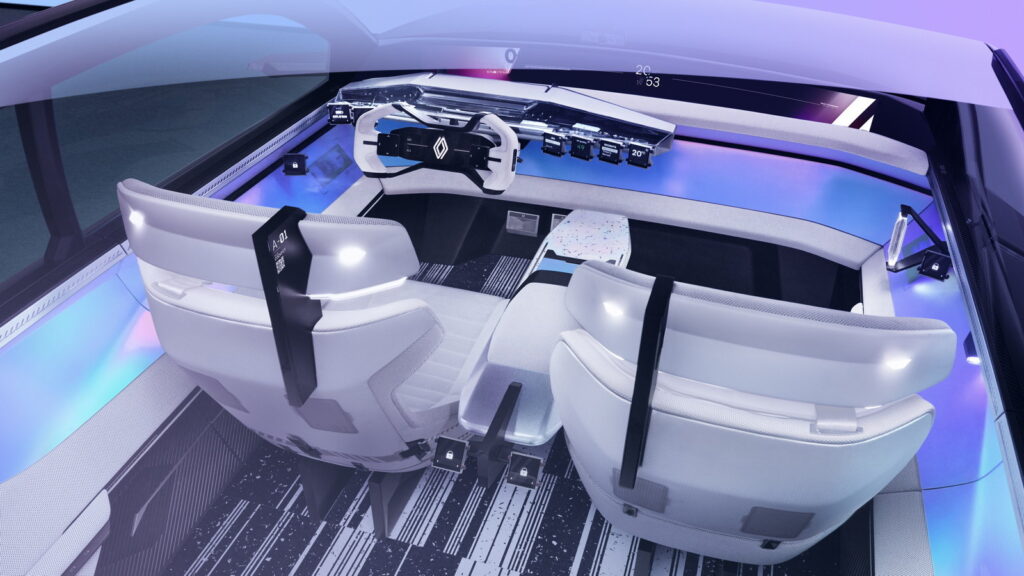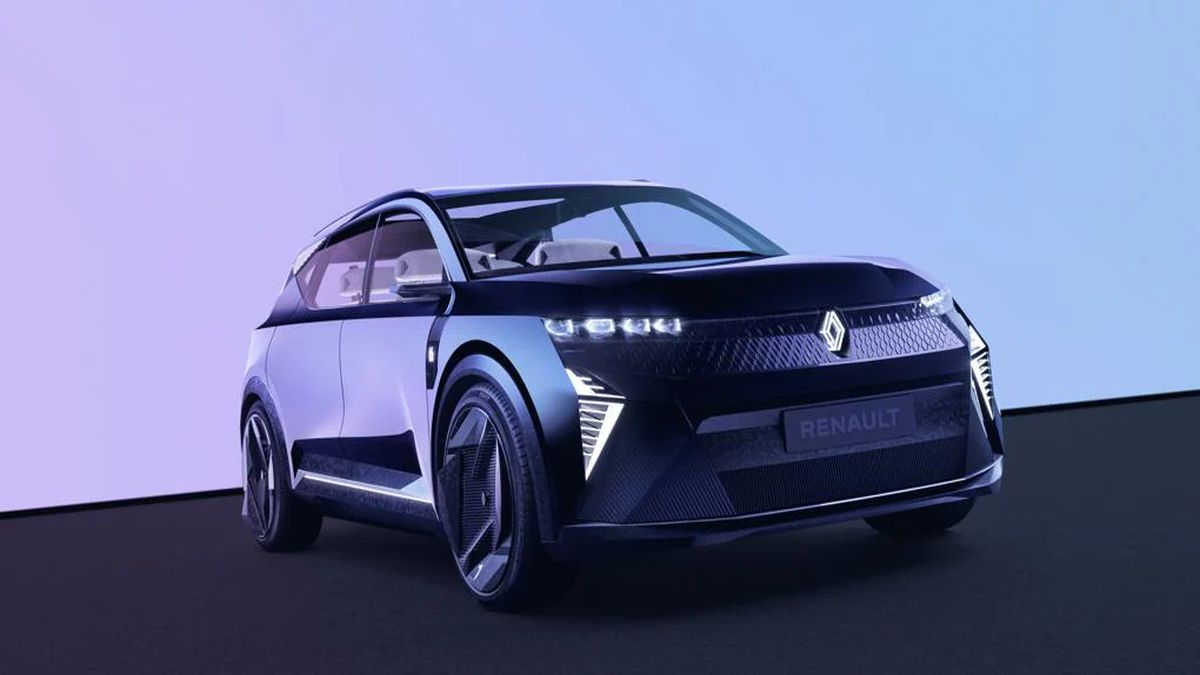At the Change Now event in Paris, Renault presented the Scénic Vision concept as a world premiere. A sustainable automobile manifesto whose exterior style will be a commercial reality in 2024, while its interior is a work of foresight.
“It’s really unlike anything out there today.” Like this Gilles Vidal Renault design director, presents the concept car Scénic Vision but above all the production model that will derive from it in 2024. If the cockpit is an exploratory work for the future, the exterior style is still to be taken into consideration since 90% will be used for the model marketed in two years.

It is difficult to give a reference segment to this new car. It is not really an SUV, nor a station wagon, much less a sedan. Rather, it is necessary to gather its DNA in its name: Scénic. “The Scénic should not be seen simply as a silhouette, but as a concept of use”, explains Gilles Vidal. The “living car”, Renault’s old slogan, seems to be back in vogue today more than ever.

If this Scénic were to become a commercial reality in 2024, we will have to wait a little longer to find an interior close to the one unveiled, probably 2028. In addition to new technologies, such as cameras that allow you to increase the field of view by 24% of the driver for greater safety,
Renault Scénic Vision, built with recycled materials
As befits a car of the future, a large number of recycled materials are also used. For example, the cabin floor is made up of 45% milk bottles and the 55% from recycled plastic tubes. More generally, i70% of the concept materials are recycled and over 95% are recyclable, including the battery.
The rate of incorporation of elements from recycling into the production version will be lower, but Renault wants to move forward quickly on the subject by making sure the equation remains profitable. That said, Renault is aiming for 33% recycled materials in the mass of future vehicles by 2030.

Under this new body type, which is based on the CMF-EV platform, the Scénic Vision concept car hides a propulsion mode that uses dual fuel. It is part of the electricity produced by a 16 kW fuel cell, located in the rear, under the floor behind the battery. A 2.5 kg tank at the front contains hydrogen. The engine, taken from the new Megane E-Tec, develops 160 kW (217 hp) and the battery has a capacity of 40 kW. Enough to offer around 800 km of range, with the promise of refueling quickly. This is why Renault logically collaborated with Hyvia, the joint venture dedicated to hydrogen that the French created with Plug Power.
















Leave a Reply
View Comments